-
Executive Summary
-
Market Introduction
-
Definition 24
-
Scope Of The Study 24
-
Market Structure
-
Market Insights
-
Research Methodology
-
Research Process 28
-
Primary Research 29
-
Secondary Research 30
-
Market Size Estimation 30
-
Forecast
-
Model 31
-
List Of Assumptions 32
-
Market Dynamics
-
Introduction 33
-
Drivers 34
- Growth Of The Automotive
- Increasing Demand For Rubber-Based
- Growing Use Of Rubber In Industrial
-
& Transportation Industry 34
-
Products In The Healthcare Sector 35
-
And Consumer Goods Applications 36
-
Restraints 37
-
Stringent Regulations And Adverse Effects Associated With Rubber Production 37
-
Opportunities 38
- Growing Adoption In The Oil &
-
Gas Industry 38
-
Trend 39
- Adoption Of Devulcanization
-
Technology 39
-
Market Factor Analysis
-
Supply Chain Analysis
- Raw Materials 40
- Vulcanization Process 41
- End-Use Industry 41
-
-
Porter’s
- Threat Of New Entrants 42
- Threat Of Substitutes 43
- Bargaining Power Of Buyers 43
-
Five Forces Analysis 42
-
Threat Of Rivalry 42
-
Bargaining Power Of Suppliers 43
-
Pricing Analysis (2020–2020) 43
-
Global Rubber Vulcanization
-
Market, By Type
-
Introduction 45
-
Vulcanizing Agent
- Sulphur 48
- Tellurium 50
- Selenium
- Metallic Oxides 52
- Others 53
- Dithiocarbamate 55
- Dithiophosphate
- Sulfenamides 57
- Xanthates 58
-
Accelerators 54
-
Others 59
-
Activators 60
-
Others 62
-
Global
-
Rubber Vulcanization Market, By Technique
-
Introduction 63
-
Sulfur Vulcanization 64
-
Other Curing Technique 66
-
Global Rubber Vulcanization Market, By End-Use Industry
-
Introduction
-
Automotive & Transportation 70
-
Industrial 71
-
Consumer Goods 72
-
Healthcare 73
-
Others
-
Global Rubber Vulcanization Market, By Region
-
Introduction
-
North America 82
- US 87
- Canada
-
Europe 96
- Germany 103
- France
- UK 112
- Italy 116
- Russia
- Spain 125
- The Netherlands 130
- Poland 139
- Rest Of Europe 143
-
Belgium 134
-
Asia-Pacific 148
- China 154
- Japan
- India 163
- South Korea 167
- Thailand 176
- Malaysia
- Indonesia 185
- Rest Of Asia-Pacific 190
-
Australia And New Zealand 172
-
Latin America 194
- Mexico 200
- Brazil
- Argentina 209
- Rest Of Latin America 214
-
Middle East And Africa 218
- Turkey 224
- Saudi Arabia 233
- Israel 238
- North Africa 242
- Rest Of Middle East And Africa 247
-
UAE 229
-
Competitive Landscape
-
Introduction 253
-
Market Strategy Analysis 253
-
Company Profiles
-
LANXESS
- Company Overview 255
- Financial Overview
- Products Offered 256
- Key Developments 256
- SWOT Analysis 256
- Key Strategies 256
- Company Overview 257
- Products Offered 258
- SWOT Analysis 258
- Key Strategies
-
Eastman Chemical Company 257
-
Financial Overview 257
-
Key Developments 258
-
Arkema SA_x005F_x000B_ 259
- Company Overview
- Financial Overview 259
- Products Offered
- Key Developments 260
- SWOT Analysis 260
- Key Strategies 260
-
BASF SE 261
- Financial Overview 261
- Key Developments 262
- SWOT
- Key Strategies 262
-
Company Overview 261
-
Products Offered 262
-
Analysis 262
-
Kumho Petrochemical
- Company Overview 263
- Financial Overview
- Products Offered 264
- Key Developments 264
- SWOT Analysis 264
- Key Strategies 264
- Company Overview 265
- Financial Overview 265
- Products Offered 266
- Key Developments 266
- SWOT Analysis 266
-
Sumitomo Chemical Co., Ltd. 265
-
Key Strategies 266
-
Duslo, A.S. 267
- Company Overview
- Financial Overview 267
- Products Offered
- Key Developments 267
- SWOT Analysis 268
- Key Strategies 268
-
Shandong Stair Chemical &
- Company Overview 269
- Products Offered 269
- SWOT Analysis 269
- Key Strategies
-
Technology Co., Ltd. 269
-
Financial Overview 269
-
Key Developments 269
-
Willing New Materials Technology Co., Ltd 271
- Financial Overview 271
- Key Developments 271
- SWOT
- Key Strategies 272
-
Company Overview 271
-
Products Offered 271
-
Analysis 272
-
King Industries,
- Company Overview 273
- Financial Overview
- Products Offered 273
- Key Developments
- SWOT Analysis 273
- Key Strategies 273
-
Inc 273
-
Conclusion
-
Key Findings 274
-
List Of Tables
-
MARKET SYNOPSIS 23
-
LIST OF ASSUMPTIONS 32
-
GLOBAL RUBBER VULCANIZATION MARKET PRICING (USD/TON) (2020–2020)
-
GLOBAL RUBBER VULCANIZATION MARKET, BY TYPE, 2020‒2027 (USD
-
MILLION) 45
-
GLOBAL RUBBER VULCANIZATION MARKET, BY TYPE, 2020‒2027
-
(KILO TONS) 46
-
GLOBAL RUBBER VULCANIZATION MARKET, BY VULCANIZING
-
AGENT, 2020‒2027 (USD MILLION) 47
-
GLOBAL RUBBER VULCANIZATION
-
MARKET, BY VULCANIZING AGENT, 2020‒2027 (KILO TONS) 47
-
VULCANIZING
-
AGENT: GLOBAL RUBBER VULCANIZATION MARKET, BY REGION, 2020‒2027 (USD MILLION) 48
-
VULCANIZING AGENT: GLOBAL RUBBER VULCANIZATION MARKET, BY REGION,
-
SULPHUR: GLOBAL RUBBER VULCANIZATION
-
MARKET, BY REGION, 2020‒2027 (USD MILLION) 49
-
SULPHUR: GLOBAL
-
RUBBER VULCANIZATION MARKET, BY REGION, 2020‒2027 (KILO TONS) 49
-
TABLE
-
TELLURIUM: GLOBAL RUBBER VULCANIZATION MARKET, BY REGION, 2020‒2027 (USD MILLION)
-
TELLURIUM: GLOBAL RUBBER VULCANIZATION MARKET, BY REGION,
-
SELENIUM: GLOBAL RUBBER VULCANIZATION
-
MARKET, BY REGION, 2020‒2027 (USD MILLION) 51
-
SELENIUM: GLOBAL
-
RUBBER VULCANIZATION MARKET, BY REGION, 2020‒2027 (KILO TONS) 51
-
TABLE
-
METALLIC OXIDES: GLOBAL RUBBER VULCANIZATION MARKET, BY REGION, 2020‒2027 (USD
-
MILLION) 52
-
METALLIC OXIDES: GLOBAL RUBBER VULCANIZATION MARKET,
-
BY REGION, 2020‒2027 (KILO TONS) 52
-
OTHERS: GLOBAL RUBBER VULCANIZATION
-
MARKET, BY REGION, 2020‒2027 (USD MILLION) 53
-
OTHERS: GLOBAL
-
RUBBER VULCANIZATION MARKET, BY REGION, 2020‒2027 (KILO TONS) 53
-
TABLE
-
GLOBAL RUBBER VULCANIZATION MARKET, BY ACCELERATORS, 2020‒2027 (USD MILLION)
-
GLOBAL RUBBER VULCANIZATION MARKET, BY ACCELERATORS, 2020‒2027
-
(KILO TONS) 54
-
ACCELERATORS: GLOBAL RUBBER VULCANIZATION MARKET,
-
BY REGION, 2020‒2027 (USD MILLION) 55
-
ACCELERATORS: GLOBAL RUBBER
-
VULCANIZATION MARKET, BY REGION, 2020‒2027 (KILO TONS) 55
-
DITHIOCARBAMATE:
-
GLOBAL RUBBER VULCANIZATION MARKET, BY REGION, 2020‒2027 (USD MILLION) 56
-
DITHIOCARBAMATE: GLOBAL RUBBER VULCANIZATION MARKET, BY REGION, 2020‒2027
-
(KILO TONS) 56
-
DITHIOPHOSPHATE: GLOBAL RUBBER VULCANIZATION
-
MARKET, BY REGION, 2020‒2027 (USD MILLION) 57
-
DITHIOPHOSPHATE:
-
GLOBAL RUBBER VULCANIZATION MARKET, BY REGION, 2020‒2027 (KILO TONS) 57
-
SULFENAMIDES: GLOBAL RUBBER VULCANIZATION MARKET, BY REGION, 2020‒2027
-
(USD MILLION) 58
-
SULFENAMIDES: GLOBAL RUBBER VULCANIZATION MARKET,
-
BY REGION, 2020‒2027 (KILO TONS) 58
-
XANTHATES: GLOBAL RUBBER
-
VULCANIZATION MARKET, BY REGION, 2020‒2027 (USD MILLION) 59
-
TABLE 31
-
XANTHATES: GLOBAL RUBBER VULCANIZATION MARKET, BY REGION, 2020‒2027 (KILO TONS)
-
OTHERS: GLOBAL RUBBER VULCANIZATION MARKET, BY REGION, 2020‒2027
-
(USD MILLION) 60
-
OTHERS: GLOBAL RUBBER VULCANIZATION MARKET,
-
BY REGION, 2020‒2027 (KILO TONS) 60
-
ACTIVATORS: GLOBAL RUBBER
-
VULCANIZATION MARKET, BY REGION, 2020‒2027 (USD MILLION) 61
-
TABLE 35
-
ACTIVATORS: GLOBAL RUBBER VULCANIZATION MARKET, BY REGION, 2020‒2027 (KILO TONS)
-
OTHERS: GLOBAL RUBBER VULCANIZATION MARKET, BY REGION, 2020‒2027
-
(USD MILLION) 62
-
OTHERS: GLOBAL RUBBER VULCANIZATION MARKET,
-
BY REGION, 2020‒2027 (KILO TONS) 62
-
GLOBAL RUBBER VULCANIZATION
-
MARKET, BY TECHNIQUE, 2020‒2027 (USD MILLION) 63
-
GLOBAL RUBBER
-
VULCANIZATION MARKET, BY TECHNIQUE, 2020‒2027 (KILO TONS) 64
-
TABLE 40
-
SULFUR VULCANIZATION: GLOBAL RUBBER VULCANIZATION MARKET, BY REGION, 2020‒2027 (USD
-
MILLION) 65
-
SULFUR VULCANIZATION: GLOBAL RUBBER VULCANIZATION
-
MARKET, BY REGION, 2020‒2027 (KILO TONS) 65
-
OTHER CURING TECHNIQUE:
-
GLOBAL RUBBER VULCANIZATION MARKET, BY REGION, 2020‒2027 (USD MILLION) 66
-
OTHER CURING TECHNIQUE: GLOBAL RUBBER VULCANIZATION MARKET, BY REGION,
-
GLOBAL RUBBER VULCANIZATION MARKET,
-
BY END-USE INDUSTRY, 2020‒2027 (USD MILLION) 68
-
GLOBAL RUBBER
-
VULCANIZATION MARKET, BY END-USE INDUSTRY, 2020‒2027 (KILO TONS) 69
-
TABLE
-
AUTOMOTIVE & TRANSPORTATION: GLOBAL RUBBER VULCANIZATION MARKET, BY REGION,
-
AUTOMOTIVE & TRANSPORTATION:
-
GLOBAL RUBBER VULCANIZATION MARKET, BY REGION, 2020‒2027 (KILO TONS) 70
-
INDUSTRIAL: GLOBAL RUBBER VULCANIZATION MARKET, BY REGION, 2020‒2027
-
(USD MILLION) 71
-
INDUSTRIAL: GLOBAL RUBBER VULCANIZATION MARKET,
-
BY REGION, 2020‒2027 (KILO TONS) 71
-
CONSUMER GOODS: GLOBAL RUBBER
-
VULCANIZATION MARKET, BY REGION, 2020‒2027 (USD MILLION) 72
-
TABLE 51
-
CONSUMER GOODS: GLOBAL RUBBER VULCANIZATION MARKET, BY REGION, 2020‒2027 (KILO TONS)
-
HEALTHCARE: GLOBAL RUBBER VULCANIZATION MARKET, BY REGION,
-
HEALTHCARE: GLOBAL RUBBER VULCANIZATION
-
MARKET, BY REGION, 2020‒2027 (KILO TONS) 73
-
OTHERS: GLOBAL RUBBER
-
VULCANIZATION MARKET, BY REGION, 2020‒2027 (USD MILLION) 74
-
TABLE 55
-
OTHERS: GLOBAL RUBBER VULCANIZATION MARKET, BY REGION, 2020‒2027 (KILO TONS) 75
-
GLOBAL RUBBER VULCANIZATION MARKET, BY REGION, 2020‒2027 (USD MILLION)
-
GLOBAL RUBBER VULCANIZATION MARKET, BY REGION, 2020‒2027
-
(KILO TONS) 77
-
GLOBAL RUBBER VULCANIZATION MARKET, BY TYPE,
-
GLOBAL RUBBER VULCANIZATION MARKET,
-
BY TYPE, 2020‒2027 (KILO TONS) 78
-
GLOBAL RUBBER VULCANIZATION
-
MARKET, BY VULCANIZING AGENT, 2020‒2027 (USD MILLION) 79
-
GLOBAL
-
RUBBER VULCANIZATION MARKET, BY VULCANIZING AGENT, 2020‒2027 (KILO TONS) 79
-
GLOBAL RUBBER VULCANIZATION MARKET, BY ACCELERATORS, 2020‒2027 (USD MILLION)
-
GLOBAL RUBBER VULCANIZATION MARKET, BY ACCELERATORS, 2020‒2027
-
(KILO TONS) 80
-
GLOBAL RUBBER VULCANIZATION MARKET, BY TECHNIQUE,
-
GLOBAL RUBBER VULCANIZATION MARKET,
-
BY TECHNIQUE, 2020‒2027 (KILO TONS) 81
-
GLOBAL RUBBER VULCANIZATION
-
MARKET, BY END-USE INDUSTRY, 2020‒2027 (USD MILLION) 81
-
GLOBAL
-
RUBBER VULCANIZATION MARKET, BY END-USE INDUSTRY, 2020‒2027 (KILO TONS) 82
-
NORTH AMERICA: RUBBER VULCANIZATION MARKET, BY COUNTRY, 2020‒2027 (USD
-
MILLION) 82
-
NORTH AMERICA: RUBBER VULCANIZATION MARKET, BY COUNTRY,
-
NORTH AMERICA: RUBBER VULCANIZATION
-
MARKET, BY TYPE, 2020‒2027 (USD MILLION) 83
-
NORTH AMERICA: RUBBER
-
VULCANIZATION MARKET, BY TYPE, 2020‒2027 (KILO TONS) 83
-
NORTH
-
AMERICA: RUBBER VULCANIZATION MARKET, BY VULCANIZING AGENT, 2020‒2027 (USD MILLION)
-
NORTH AMERICA: RUBBER VULCANIZATION MARKET, BY VULCANIZING
-
AGENT, 2020‒2027 (KILO TONS) 84
-
NORTH AMERICA: RUBBER VULCANIZATION
-
MARKET, BY ACCELERATORS, 2020‒2027 (USD MILLION) 85
-
NORTH AMERICA:
-
RUBBER VULCANIZATION MARKET, BY ACCELERATORS, 2020‒2027 (KILO TONS) 85
-
NORTH AMERICA: RUBBER VULCANIZATION MARKET, BY TECHNIQUE, 2020‒2027 (USD
-
MILLION) 85
-
NORTH AMERICA: RUBBER VULCANIZATION MARKET, BY TECHNIQUE,
-
NORTH AMERICA: RUBBER VULCANIZATION
-
MARKET, BY END-USE INDUSTRY, 2020‒2027 (USD MILLION) 86
-
NORTH
-
AMERICA: RUBBER VULCANIZATION MARKET, BY END-USE INDUSTRY, 2020‒2027 (KILO TONS)
-
US: RUBBER VULCANIZATION MARKET, BY TYPE, 2020‒2027 (USD
-
MILLION) 87
-
US: RUBBER VULCANIZATION MARKET, BY TYPE, 2020‒2027
-
(KILO TONS) 88
-
US: RUBBER VULCANIZATION MARKET, BY VULCANIZING
-
AGENT, 2020‒2027 (USD MILLION) 88
-
US: RUBBER VULCANIZATION MARKET,
-
BY VULCANIZING AGENT, 2020‒2027 (KILO TONS) 89
-
US: RUBBER VULCANIZATION
-
MARKET, BY ACCELERATORS, 2020‒2027 (USD MILLION) 89
-
US: RUBBER
-
VULCANIZATION MARKET, BY ACCELERATORS, 2020‒2027 (KILO TONS) 90
-
TABLE
-
US: RUBBER VULCANIZATION MARKET, BY TECHNIQUE, 2020‒2027 (USD MILLION) 90
-
US: RUBBER VULCANIZATION MARKET, BY TECHNIQUE, 2020‒2027 (KILO
-
TONS) 90
-
US: RUBBER VULCANIZATION MARKET, BY END-USE INDUSTRY,
-
US: RUBBER VULCANIZATION MARKET,
-
BY END-USE INDUSTRY, 2020‒2027 (KILO TONS) 91
-
CANADA: RUBBER
-
VULCANIZATION MARKET, BY TYPE, 2020‒2027 (USD MILLION) 92
-
CANADA:
-
RUBBER VULCANIZATION MARKET, BY TYPE, 2020‒2027 (KILO TONS) 92
-
TABLE
-
US: RUBBER VULCANIZATION MARKET, BY VULCANIZING AGENT, 2020‒2027 (USD MILLION)
-
US: RUBBER VULCANIZATION MARKET, BY VULCANIZING AGENT, 2020‒2027
-
(KILO TONS) 93
-
US: RUBBER VULCANIZATION MARKET, BY ACCELERATORS,
-
US: RUBBER VULCANIZATION MARKET,
-
BY ACCELERATORS, 2020‒2027 (KILO TONS) 94
-
CANADA: RUBBER VULCANIZATION
-
MARKET, BY TECHNIQUE, 2020‒2027 (USD MILLION) 94
-
CANADA: RUBBER
-
VULCANIZATION MARKET, BY TECHNIQUE, 2020‒2027 (KILO TONS) 95
-
TABLE 98
-
CANADA: RUBBER VULCANIZATION MARKET, BY END-USE INDUSTRY, 2020‒2027 (USD MILLION)
-
CANADA: RUBBER VULCANIZATION MARKET, BY END-USE INDUSTRY,
-
EUROPE: RUBBER VULCANIZATION MARKET,
-
BY COUNTRY, 2020‒2027 (USD MILLION) 97
-
EUROPE: RUBBER VULCANIZATION
-
MARKET, BY COUNTRY, 2020‒2027 (KILO TONS) 98
-
EUROPE: RUBBER
-
VULCANIZATION MARKET, BY TYPE, 2020‒2027 (USD MILLION) 98
-
EUROPE:
-
RUBBER VULCANIZATION MARKET, BY TYPE, 2020‒2027 (KILO TONS) 99
-
TABLE
-
EUROPE: RUBBER VULCANIZATION MARKET, BY VULCANIZING AGENT, 2020‒2027 (USD MILLION)
-
EUROPE: RUBBER VULCANIZATION MARKET, BY VULCANIZING AGENT,
-
EUROPE: RUBBER VULCANIZATION MARKET,
-
BY ACCELERATORS, 2020‒2027 (USD MILLION) 100
-
EUROPE: RUBBER
-
VULCANIZATION MARKET, BY ACCELERATORS, 2020‒2027 (KILO TONS) 101
-
TABLE
-
EUROPE: RUBBER VULCANIZATION MARKET, BY TECHNIQUE, 2020‒2027 (USD MILLION) 101
-
EUROPE: RUBBER VULCANIZATION MARKET, BY TECHNIQUE, 2020‒2027 (KILO
-
TONS) 101
-
EUROPE: RUBBER VULCANIZATION MARKET, BY END-USE INDUSTRY,
-
EUROPE: RUBBER VULCANIZATION MARKET,
-
BY END-USE INDUSTRY, 2020‒2027 (KILO TONS) 102
-
GERMANY: RUBBER
-
VULCANIZATION MARKET, BY TYPE, 2020‒2027 (USD MILLION) 103
-
TABLE 113
-
GERMANY: RUBBER VULCANIZATION MARKET, BY TYPE, 2020‒2027 (KILO TONS) 103
-
GERMANY: RUBBER VULCANIZATION MARKET, BY VULCANIZING AGENT, 2020‒2027
-
(USD MILLION) 104
-
GERMANY: RUBBER VULCANIZATION MARKET, BY
-
VULCANIZING AGENT, 2020‒2027 (KILO TONS) 104
-
GERMANY: RUBBER
-
VULCANIZATION MARKET, BY ACCELERATORS, 2020‒2027 (USD MILLION) 105
-
TABLE
-
GERMANY: RUBBER VULCANIZATION MARKET, BY ACCELERATORS, 2020‒2027 (KILO TONS)
-
GERMANY: RUBBER VULCANIZATION MARKET, BY TECHNIQUE, 2020‒2027
-
(USD MILLION) 106
-
GERMANY: RUBBER VULCANIZATION MARKET, BY
-
TECHNIQUE, 2020‒2027 (KILO TONS) 106
-
GERMANY: RUBBER VULCANIZATION
-
MARKET, BY END-USE INDUSTRY, 2020‒2027 (USD MILLION) 106
-
GERMANY:
-
RUBBER VULCANIZATION MARKET, BY END-USE INDUSTRY, 2020‒2027 (KILO TONS) 107
-
FRANCE: RUBBER VULCANIZATION MARKET, BY TYPE, 2020‒2027 (USD MILLION)
-
FRANCE: RUBBER VULCANIZATION MARKET, BY TYPE, 2020‒2027
-
(KILO TONS) 108
-
FRANCE: RUBBER VULCANIZATION MARKET, BY VULCANIZING
-
AGENT, 2020‒2027 (USD MILLION) 108
-
FRANCE: RUBBER VULCANIZATION
-
MARKET, BY VULCANIZING AGENT, 2020‒2027 (KILO TONS) 109
-
FRANCE:
-
RUBBER VULCANIZATION MARKET, BY ACCELERATORS, 2020‒2027 (USD MILLION) 109
-
FRANCE: RUBBER VULCANIZATION MARKET, BY ACCELERATORS, 2020‒2027 (KILO
-
TONS) 110
-
FRANCE: RUBBER VULCANIZATION MARKET, BY TECHNIQUE,
-
FRANCE: RUBBER VULCANIZATION MARKET,
-
BY TECHNIQUE, 2020‒2027 (KILO TONS) 110
-
FRANCE: RUBBER VULCANIZATION
-
MARKET, BY END-USE INDUSTRY, 2020‒2027 (USD MILLION) 111
-
FRANCE:
-
RUBBER VULCANIZATION MARKET, BY END-USE INDUSTRY, 2020‒2027 (KILO TONS) 111
-
UK: RUBBER VULCANIZATION MARKET, BY TYPE, 2020‒2027 (USD MILLION) 112
-
UK: RUBBER VULCANIZATION MARKET, BY TYPE, 2020‒2027 (KILO TONS)
-
UK: RUBBER VULCANIZATION MARKET, BY VULCANIZING AGENT,
-
UK: RUBBER VULCANIZATION MARKET,
-
BY VULCANIZING AGENT, 2020‒2027 (KILO TONS) 113
-
UK: RUBBER
-
VULCANIZATION MARKET, BY ACCELERATORS, 2020‒2027 (USD MILLION) 114
-
TABLE
-
UK: RUBBER VULCANIZATION MARKET, BY ACCELERATORS, 2020‒2027 (KILO TONS) 114
-
UK: RUBBER VULCANIZATION MARKET, BY TECHNIQUE, 2020‒2027 (USD
-
MILLION) 115
-
UK: RUBBER VULCANIZATION MARKET, BY TECHNIQUE,
-
UK: RUBBER VULCANIZATION MARKET,
-
BY END-USE INDUSTRY, 2020‒2027 (USD MILLION) 115
-
UK: RUBBER
-
VULCANIZATION MARKET, BY END-USE INDUSTRY, 2020‒2027 (KILO TONS) 116
-
TABLE
-
ITALY: RUBBER VULCANIZATION MARKET, BY TYPE, 2020‒2027 (USD MILLION) 116
-
ITALY: RUBBER VULCANIZATION MARKET, BY TYPE, 2020‒2027 (KILO TONS)
-
ITALY: RUBBER VULCANIZATION MARKET, BY VULCANIZING AGENT,
-
ITALY: RUBBER VULCANIZATION MARKET,
-
BY VULCANIZING AGENT, 2020‒2027 (KILO TONS) 118
-
ITALY: RUBBER
-
VULCANIZATION MARKET, BY ACCELERATORS, 2020‒2027 (USD MILLION) 118
-
TABLE
-
ITALY: RUBBER VULCANIZATION MARKET, BY ACCELERATORS, 2020‒2027 (KILO TONS) 119
-
ITALY: RUBBER VULCANIZATION MARKET, BY TECHNIQUE, 2020‒2027 (USD
-
MILLION) 119
-
ITALY: RUBBER VULCANIZATION MARKET, BY TECHNIQUE,
-
ITALY: RUBBER VULCANIZATION MARKET,
-
BY END-USE INDUSTRY, 2020‒2027 (USD MILLION) 120
-
ITALY: RUBBER
-
VULCANIZATION MARKET, BY END-USE INDUSTRY, 2020‒2027 (KILO TONS) 120
-
TABLE
-
RUSSIA: RUBBER VULCANIZATION MARKET, BY TYPE, 2020‒2027 (USD MILLION) 121
-
RUSSIA: RUBBER VULCANIZATION MARKET, BY TYPE, 2020‒2027 (KILO
-
TONS) 121
-
RUSSIA: RUBBER VULCANIZATION MARKET, BY VULCANIZING
-
AGENT, 2020‒2027 (USD MILLION) 122
-
RUSSIA: RUBBER VULCANIZATION
-
MARKET, BY VULCANIZING AGENT, 2020‒2027 (KILO TONS) 122
-
RUSSIA:
-
RUBBER VULCANIZATION MARKET, BY ACCELERATORS, 2020‒2027 (USD MILLION) 123
-
RUSSIA: RUBBER VULCANIZATION MARKET, BY ACCELERATORS, 2020‒2027 (KILO
-
TONS) 123
-
RUSSIA: RUBBER VULCANIZATION MARKET, BY TECHNIQUE,
-
RUSSIA: RUBBER VULCANIZATION MARKET,
-
BY TECHNIQUE, 2020‒2027 (KILO TONS) 124
-
RUSSIA: RUBBER VULCANIZATION
-
MARKET, BY END-USE INDUSTRY, 2020‒2027 (USD MILLION) 124
-
RUSSIA:
-
RUBBER VULCANIZATION MARKET, BY END-USE INDUSTRY, 2020‒2027 (KILO TONS) 125
-
SPAIN: RUBBER VULCANIZATION MARKET, BY TYPE, 2020‒2027 (USD MILLION)
-
SPAIN: RUBBER VULCANIZATION MARKET, BY TYPE, 2020‒2027
-
(KILO TONS) 126
-
SPAIN: RUBBER VULCANIZATION MARKET, BY VULCANIZING
-
AGENT, 2020‒2027 (USD MILLION) 126
-
SPAIN: RUBBER VULCANIZATION
-
MARKET, BY VULCANIZING AGENT, 2020‒2027 (KILO TONS) 127
-
SPAIN:
-
RUBBER VULCANIZATION MARKET, BY ACCELERATORS, 2020‒2027 (USD MILLION) 127
-
SPAIN: RUBBER VULCANIZATION MARKET, BY ACCELERATORS, 2020‒2027 (KILO
-
TONS) 128
-
SPAIN: RUBBER VULCANIZATION MARKET, BY TECHNIQUE,
-
SPAIN: RUBBER VULCANIZATION MARKET,
-
BY TECHNIQUE, 2020‒2027 (KILO TONS) 128
-
SPAIN: RUBBER VULCANIZATION
-
MARKET, BY END-USE INDUSTRY, 2020‒2027 (USD MILLION) 129
-
SPAIN:
-
RUBBER VULCANIZATION MARKET, BY END-USE INDUSTRY, 2020‒2027 (KILO TONS) 129
-
THE NETHERLANDS: RUBBER VULCANIZATION MARKET, BY TYPE, 2020‒2027 (USD
-
MILLION) 130
-
THE NETHERLANDS: RUBBER VULCANIZATION MARKET,
-
BY TYPE, 2020‒2027 (KILO TONS) 130
-
THE NETHERLANDS: RUBBER
-
VULCANIZATION MARKET, BY VULCANIZING AGENT, 2020‒2027 (USD MILLION) 131
-
THE NETHERLANDS: RUBBER VULCANIZATION MARKET, BY VULCANIZING AGENT,
-
THE NETHERLANDS: RUBBER VULCANIZATION
-
MARKET, BY ACCELERATORS, 2020‒2027 (USD MILLION) 132
-
THE NETHERLANDS:
-
RUBBER VULCANIZATION MARKET, BY ACCELERATORS, 2020‒2027 (KILO TONS) 132
-
THE NETHERLANDS: RUBBER VULCANIZATION MARKET, BY TECHNIQUE, 2020‒2027
-
(USD MILLION) 133
-
THE NETHERLANDS: RUBBER VULCANIZATION MARKET,
-
BY TECHNIQUE, 2020‒2027 (KILO TONS) 133
-
THE NETHERLANDS: RUBBER
-
VULCANIZATION MARKET, BY END-USE INDUSTRY, 2020‒2027 (USD MILLION) 133
-
THE NETHERLANDS: RUBBER VULCANIZATION MARKET, BY END-USE INDUSTRY, 2020‒2027
-
(KILO TONS) 134
-
BELGIUM: RUBBER VULCANIZATION MARKET, BY TYPE,
-
BELGIUM: RUBBER VULCANIZATION MARKET,
-
BY TYPE, 2020‒2027 (KILO TONS) 135
-
BELGIUM: RUBBER VULCANIZATION
-
MARKET, BY VULCANIZING AGENT, 2020‒2027 (USD MILLION) 135
-
BELGIUM:
-
RUBBER VULCANIZATION MARKET, BY VULCANIZING AGENT, 2020‒2027 (KILO TONS) 136
-
BELGIUM: RUBBER VULCANIZATION MARKET, BY ACCELERATORS, 2020‒2027
-
(USD MILLION) 136
-
BELGIUM: RUBBER VULCANIZATION MARKET, BY
-
ACCELERATORS, 2020‒2027 (KILO TONS) 137
-
BELGIUM: RUBBER VULCANIZATION
-
MARKET, BY TECHNIQUE, 2020‒2027 (USD MILLION) 137
-
BELGIUM:
-
RUBBER VULCANIZATION MARKET, BY TECHNIQUE, 2020‒2027 (KILO TONS) 137
-
TABLE
-
BELGIUM: RUBBER VULCANIZATION MARKET, BY END-USE INDUSTRY, 2020‒2027 (USD MILLION)
-
BELGIUM: RUBBER VULCANIZATION MARKET, BY END-USE INDUSTRY,
-
POLAND: RUBBER VULCANIZATION MARKET,
-
BY TYPE, 2020‒2027 (USD MILLION) 139
-
POLAND: RUBBER VULCANIZATION
-
MARKET, BY TYPE, 2020‒2027 (KILO TONS) 139
-
POLAND: RUBBER VULCANIZATION
-
MARKET, BY VULCANIZING AGENT, 2020‒2027 (USD MILLION) 140
-
POLAND:
-
RUBBER VULCANIZATION MARKET, BY VULCANIZING AGENT, 2020‒2027 (KILO TONS) 140
-
POLAND: RUBBER VULCANIZATION MARKET, BY ACCELERATORS, 2020‒2027
-
(USD MILLION) 141
-
POLAND: RUBBER VULCANIZATION MARKET, BY ACCELERATORS,
-
POLAND: RUBBER VULCANIZATION MARKET,
-
BY TECHNIQUE, 2020‒2027 (USD MILLION) 142
-
POLAND: RUBBER VULCANIZATION
-
MARKET, BY TECHNIQUE, 2020‒2027 (KILO TONS) 142
-
POLAND: RUBBER
-
VULCANIZATION MARKET, BY END-USE INDUSTRY, 2020‒2027 (USD MILLION) 142
-
POLAND: RUBBER VULCANIZATION MARKET, BY END-USE INDUSTRY, 2020‒2027
-
(KILO TONS) 143
-
REST OF EUROPE: RUBBER VULCANIZATION MARKET,
-
BY TYPE, 2020‒2027 (USD MILLION) 143
-
REST OF EUROPE: RUBBER
-
VULCANIZATION MARKET, BY TYPE, 2020‒2027 (KILO TONS) 144
-
REST
-
OF EUROPE: RUBBER VULCANIZATION MARKET, BY VULCANIZING AGENT, 2020‒2027 (USD MILLION)
-
REST OF EUROPE: RUBBER VULCANIZATION MARKET, BY VULCANIZING
-
AGENT, 2020‒2027 (KILO TONS) 145
-
REST OF EUROPE: RUBBER VULCANIZATION
-
MARKET, BY ACCELERATORS, 2020‒2027 (USD MILLION) 145
-
REST OF
-
EUROPE: RUBBER VULCANIZATION MARKET, BY ACCELERATORS, 2020‒2027 (KILO TONS) 146
-
REST OF EUROPE: RUBBER VULCANIZATION MARKET, BY TECHNIQUE, 2020‒2027
-
(USD MILLION) 146
-
REST OF EUROPE: RUBBER VULCANIZATION MARKET,
-
BY TECHNIQUE, 2020‒2027 (KILO TONS) 146
-
REST OF EUROPE: RUBBER
-
VULCANIZATION MARKET, BY END-USE INDUSTRY, 2020‒2027 (USD MILLION) 147
-
REST OF EUROPE: RUBBER VULCANIZATION MARKET, BY END-USE INDUSTRY, 2020‒2027
-
(KILO TONS) 147
-
ASIA-PACIFIC: RUBBER VULCANIZATION MARKET,
-
BY COUNTRY, 2020‒2027 (USD MILLION) 148
-
ASIA-PACIFIC: RUBBER
-
VULCANIZATION MARKET, BY COUNTRY, 2020‒2027 (KILO TONS) 149
-
TABLE 214
-
ASIA-PACIFIC: RUBBER VULCANIZATION MARKET, BY TYPE, 2020‒2027 (USD MILLION) 149
-
ASIA-PACIFIC: RUBBER VULCANIZATION MARKET, BY TYPE, 2020‒2027 (KILO TONS)
-
ASIA-PACIFIC: RUBBER VULCANIZATION MARKET, BY VULCANIZING
-
AGENT, 2020‒2027 (USD MILLION) 150
-
ASIA-PACIFIC: RUBBER VULCANIZATION
-
MARKET, BY VULCANIZING AGENT, 2020‒2027 (KILO TONS) 151
-
ASIA-PACIFIC:
-
RUBBER VULCANIZATION MARKET, BY ACCELERATORS, 2020‒2027 (USD MILLION) 151
-
ASIA-PACIFIC: RUBBER VULCANIZATION MARKET, BY ACCELERATORS, 2020‒2027
-
(KILO TONS) 152
-
ASIA-PACIFIC: RUBBER VULCANIZATION MARKET,
-
BY TECHNIQUE, 2020‒2027 (USD MILLION) 152
-
ASIA-PACIFIC: RUBBER
-
VULCANIZATION MARKET, BY TECHNIQUE, 2020‒2027 (KILO TONS) 152
-
TABLE 221
-
ASIA-PACIFIC: RUBBER VULCANIZATION MARKET, BY END-USE INDUSTRY, 2020‒2027 (USD MILLION)
-
ASIA-PACIFIC: RUBBER VULCANIZATION MARKET, BY END-USE INDUSTRY,
-
CHINA: RUBBER VULCANIZATION MARKET,
-
BY TYPE, 2020‒2027 (USD MILLION) 154
-
CHINA: RUBBER VULCANIZATION
-
MARKET, BY TYPE, 2020‒2027 (KILO TONS) 154
-
CHINA: RUBBER VULCANIZATION
-
MARKET, BY VULCANIZING AGENT, 2020‒2027 (USD MILLION) 155
-
CHINA:
-
RUBBER VULCANIZATION MARKET, BY VULCANIZING AGENT, 2020‒2027 (KILO TONS) 155
-
CHINA: RUBBER VULCANIZATION MARKET, BY ACCELERATORS, 2020‒2027
-
(USD MILLION) 156
-
CHINA: RUBBER VULCANIZATION MARKET, BY ACCELERATORS,
-
CHINA: RUBBER VULCANIZATION MARKET,
-
BY TECHNIQUE, 2020‒2027 (USD MILLION) 156
-
CHINA: RUBBER VULCANIZATION
-
MARKET, BY TECHNIQUE, 2020‒2027 (KILO TONS) 157
-
CHINA: RUBBER
-
VULCANIZATION MARKET, BY END-USE INDUSTRY, 2020‒2027 (USD MILLION) 157
-
CHINA: RUBBER VULCANIZATION MARKET, BY END-USE INDUSTRY, 2020‒2027 (KILO
-
TONS) 158
-
JAPAN: RUBBER VULCANIZATION MARKET, BY TYPE, 2020‒2027
-
(USD MILLION) 158
-
JAPAN: RUBBER VULCANIZATION MARKET, BY TYPE,
-
JAPAN: RUBBER VULCANIZATION MARKET,
-
BY VULCANIZING AGENT, 2020‒2027 (USD MILLION) 159
-
JAPAN: RUBBER
-
VULCANIZATION MARKET, BY VULCANIZING AGENT, 2020‒2027 (KILO TONS) 160
-
TABLE
-
JAPAN: RUBBER VULCANIZATION MARKET, BY ACCELERATORS, 2020‒2027 (USD MILLION)
-
JAPAN: RUBBER VULCANIZATION MARKET, BY ACCELERATORS, 2020‒2027
-
(KILO TONS) 161
-
JAPAN: RUBBER VULCANIZATION MARKET, BY TECHNIQUE,
-
JAPAN: RUBBER VULCANIZATION MARKET,
-
BY TECHNIQUE, 2020‒2027 (KILO TONS) 161
-
JAPAN: RUBBER VULCANIZATION
-
MARKET, BY END-USE INDUSTRY, 2020‒2027 (USD MILLION) 162
-
JAPAN:
-
RUBBER VULCANIZATION MARKET, BY END-USE INDUSTRY, 2020‒2027 (KILO TONS) 162
-
INDIA: RUBBER VULCANIZATION MARKET, BY TYPE, 2020‒2027 (USD MILLION)
-
INDIA: RUBBER VULCANIZATION MARKET, BY TYPE, 2020‒2027
-
(KILO TONS) 163
-
INDIA: RUBBER VULCANIZATION MARKET, BY VULCANIZING
-
AGENT, 2020‒2027 (USD MILLION) 164
-
INDIA: RUBBER VULCANIZATION
-
MARKET, BY VULCANIZING AGENT, 2020‒2027 (KILO TONS) 164
-
INDIA:
-
RUBBER VULCANIZATION MARKET, BY ACCELERATORS, 2020‒2027 (USD MILLION) 165
-
INDIA: RUBBER VULCANIZATION MARKET, BY ACCELERATORS, 2020‒2027 (KILO
-
TONS) 165
-
INDIA: RUBBER VULCANIZATION MARKET, BY TECHNIQUE,
-
INDIA: RUBBER VULCANIZATION MARKET,
-
BY TECHNIQUE, 2020‒2027 (KILO TONS) 166
-
INDIA: RUBBER VULCANIZATION
-
MARKET, BY END-USE INDUSTRY, 2020‒2027 (USD MILLION) 166
-
INDIA:
-
RUBBER VULCANIZATION MARKET, BY END-USE INDUSTRY, 2020‒2027 (KILO TONS) 167
-
SOUTH KOREA: RUBBER VULCANIZATION MARKET, BY TYPE, 2020‒2027 (USD MILLION)
-
167<

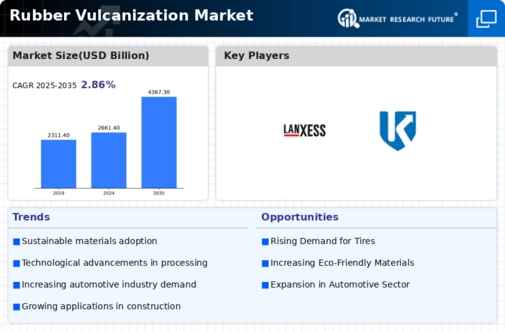
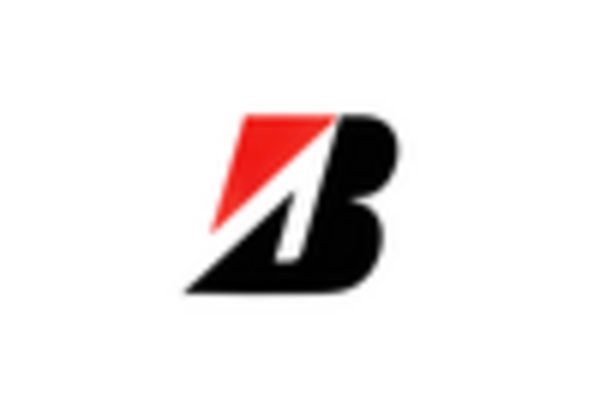
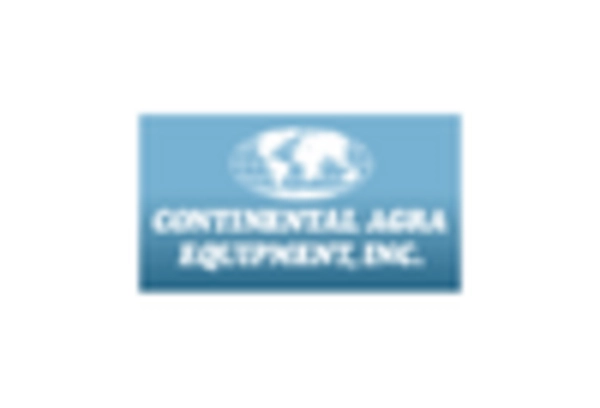


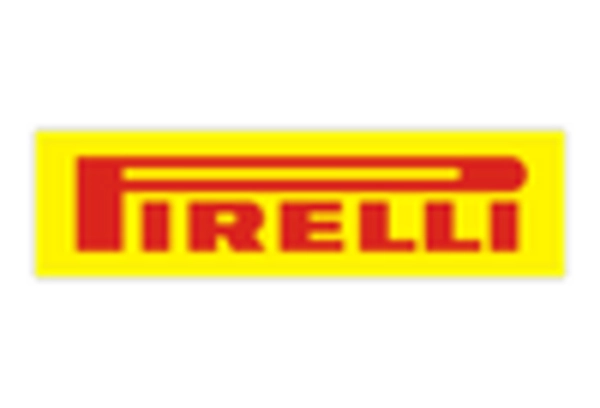
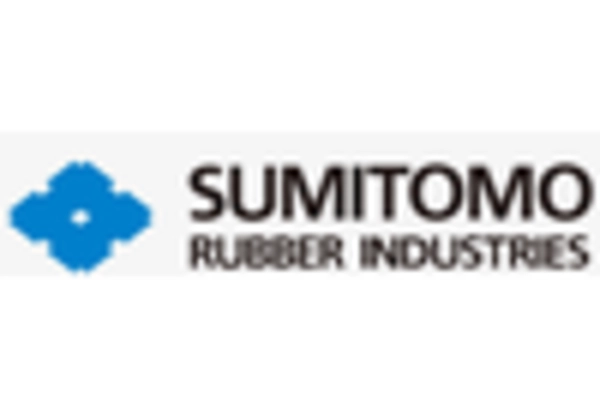









Leave a Comment